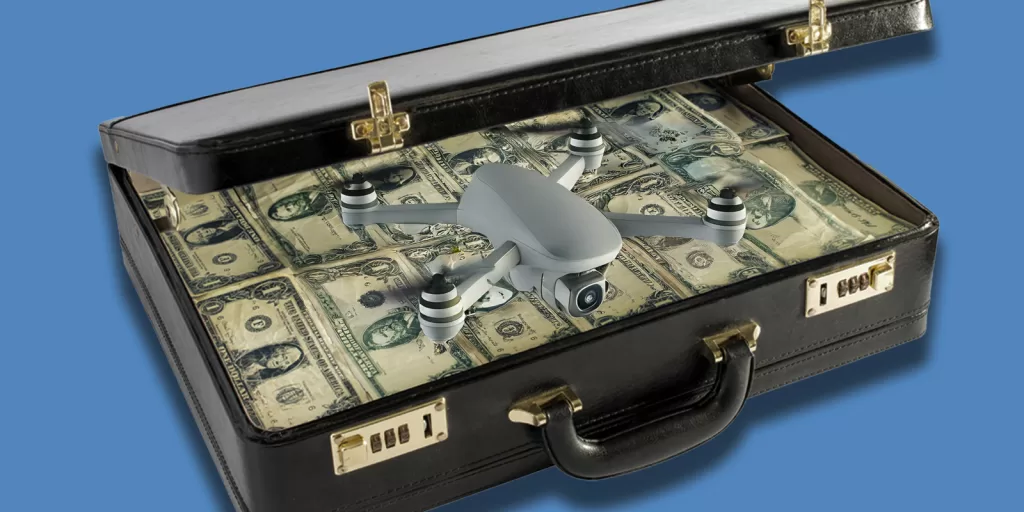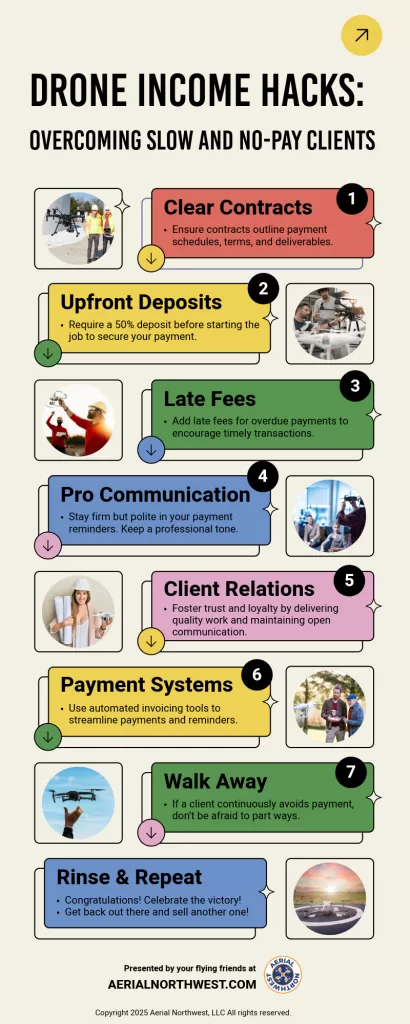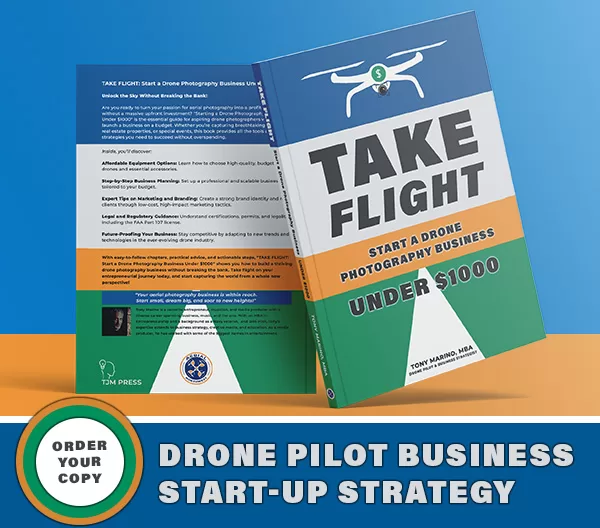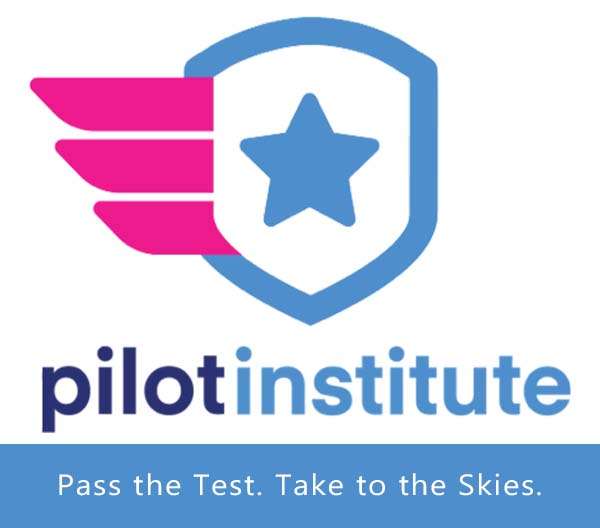
The drone industry is booming. With more and more industries turning to drone technology for everything from aerial photography to mapping and surveying, the demand for drone services has never been higher. However, alongside this boom comes a persistent problem: clients who don’t pay on time—or worse, don’t pay at all. As a drone pilot, you might be familiar with the frustrations of chasing down payments and dealing with clients who don’t respect your time or work.
This article will address these challenges head-on, showing you how to conquer slow and no-pay clients, and ensure you get paid what you’re worth.
Background
Drones have evolved from a niche hobbyist tool to a critical asset in industries like real estate, construction, agriculture, and even entertainment. However, as the market grows, so do the number of service providers, making competition fierce. The increased availability of drone technology has brought more clients, but it has also led to a rise in payment disputes and delayed invoices.
As a result, many drone pilots find themselves navigating this tricky business landscape, trying to balance delivering high-quality work while chasing down payments.
Case Stories
Take the story of Sarah, a drone photographer who specializes in real estate. Early in her career, she faced frequent issues with clients who would promise to pay but delay for weeks—or even months. One particular client took three months to pay after a full-scale shoot for a luxury home. After that, Sarah implemented a strategy that changed everything: upfront deposits. Now, she requires a 50% deposit before any work begins. This simple adjustment helped her eliminate most payment issues.
Then there’s Mark, a drone videographer who covers events. He learned the hard way that even long-term clients can take advantage of your kindness. After an event where the client kept stalling on payment, he started sending invoices immediately after each shoot, with clearly defined due dates and late fees. It wasn’t just about getting paid—it was about setting expectations and demonstrating his value. These actions not only sped up payments but also established boundaries that earned his clients’ respect.
A consistent theme among successful pilots is strong communication. They maintain clear contracts that outline payment schedules, deliverables, and terms. By setting these expectations from the start, they reduce the likelihood of disputes down the road. These pilots also know how to vet clients effectively, only working with those who have a solid reputation for paying on time.
Challenges and Conflicts
The reality is that slow pay and no-pay clients are an unavoidable part of the drone business. Some clients simply don’t understand the value of the service, while others may intentionally drag their feet. In competitive markets, where pilots are eager for work, these issues are compounded. You may feel the pressure to accept lower-paying jobs or give clients more time than you should, just to keep the pipeline filled. However, this approach can lead to burnout and financial strain.
Drone pilots also face a significant challenge with market saturation. As more people enter the industry with lower prices or less experience, it becomes harder to differentiate your services and justify your pricing. Clients may start comparing you to the “cheaper” options, leading them to push back on paying your rates. This is where solid business practices come into play.
Striking the Balance: Assertive Without Alienating
One of the most delicate aspects of dealing with slow or no-pay clients is finding the balance between being assertive and aggressive. It’s crucial to stand your ground without alienating the client, as burning bridges can hurt your reputation and future business.
Being assertive means clearly communicating your expectations, setting deadlines, and enforcing your payment terms. However, this doesn’t mean being rude or overly demanding. Tone is everything—keep communication professional and calm, and always use positive language. For instance, instead of saying, “You owe me money, pay up!” you might say, “I wanted to follow up on the payment that’s due, as I’m sure you’re just busy. Let me know if there’s any issue with the invoice.”
This approach is firm yet respectful, giving the client the benefit of the doubt while still making it clear that their payment is a priority. At the same time, it also signals that you’re professional and expect to be treated as such, without resorting to emotional reactions. Clients are more likely to pay when they feel respected and when they understand that your terms are non-negotiable.
Resolution
So, how can you combat slow and no-pay clients and protect your earnings? Here are some proven strategies:
- Contracts & Clear Agreements – Always use a contract that outlines every detail, including payment schedules and terms. This makes it harder for clients to back out or stall without consequences.
- Upfront Deposits – Requiring an upfront deposit, typically 50%, ensures that clients are financially committed from the get-go. This also covers your costs in case the project is canceled last minute.
- Late Fees & Payment Terms – Clearly state late fees in your contracts. If a client hasn’t paid by the agreed-upon date, adding a late fee shows that you mean business and that there are consequences for delays.
- Set Expectations Early – From your first interaction, be clear about your pricing, payment expectations, and deadlines. Don’t shy away from letting the client know your work has value.
- Create a Strong Client Relationship – Building trust with your clients means they’re more likely to pay on time and refer you to others. Offer them exceptional service and follow up frequently, but don’t be afraid to set boundaries.
- Invoicing Systems – Use professional invoicing software to make the payment process smooth for clients. Automate reminders for overdue payments, making it harder for clients to “forget.”
- Know When to Walk Away – Sometimes, the best way to protect your business is to say no. If a client is consistently slow to pay or refuses to sign a contract, it might be time to move on and find a more reliable partner.
Takeaway
The drone industry offers incredible potential for pilots who are prepared to face the challenges of managing clients. Slow pay and no-pay clients are a reality, but by implementing smart business practices, you can significantly reduce the risk. Remember, you’re running a business, not just a service—setting clear expectations, being firm about payment, and building strong client relationships are key to long-term success.
The market is booming, and by being strategic, you can ensure that your earnings soar.
If you have any questions, let us know! If you’d like to hire us, you can get more information here.
Written by: Tony Marino, MBA – FAA Certified Part 107 Commercial Drone Pilot and Chief Business Strategist at Aerial Northwest
Disclaimer: The information provided in this blog post is for general informational purposes only and should not be construed as legal advice.

Drone Pilot MBA (Podcast):
Drone Income Strategy: Overcoming Slow and No-Pay Clients
Resources
FAA Resources: FAA DroneZone
Article: Pitch Perfect: Guide for Drone Pilots to Get Jobs
Drone Service Providers Alliance
Commercial Drone Alliance
Starting Your Own Drone Service Business
Pick up your copy today on Amazon and wherever fine books are sold.

DRONE BUSINESS STRATEGY MAGAZINE
A free digital publication made exclusively for all small business drone pilots to them help start-up, become profitable while sustaining a competitive advantage within the drone service industry sector they opt to serve.
“If you love to fly, we’d love to have you come aboard!”
We share your information with no one. Our Privacy Policy.










Leave a Reply
Your email is always safe with us.